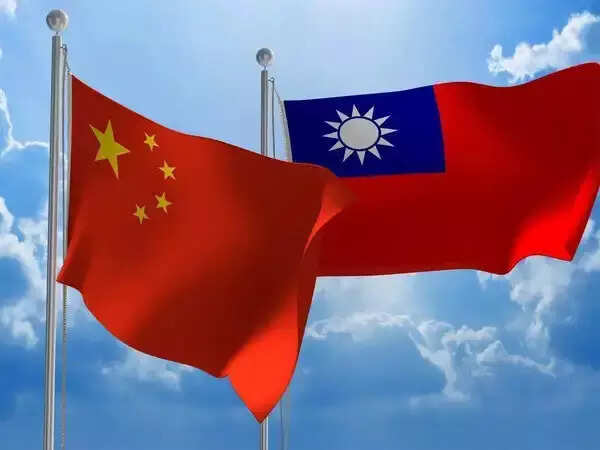
Taiwan, an island nation at the heart of the global semiconductor supply chain, remains both an economic linchpin and a geopolitical flashpoint.
Despite growing discourse around “de-risking” critical technology supply chains, especially in the chip sector, there is little concrete evidence that the world is succeeding in diversifying away from Taiwan’s dominance. With over 60% of global chip production flowing from its foundries, Taiwan stands at the epicentre of what many now call “the new oil”—semiconductors.
Geopolitically, Taiwan is encircled by what may be called a ‘Double Ring of Fire’—facing pressure from China to the west and lying atop pronounced seismic fault lines. In an era increasingly defined by digital interdependence, the strategic adage holds true: those who control networks and trade flows will shape the contours of global power. In both domains, chips—and by extension, Taiwan—are central.
Military Speculation and Strategic Realities
A growing narrative has emerged around China preparing for a possible armed conflict with Taiwan. This has permeated even popular culture, as seen in the television series Zero Day Attack, which imagines a futuristic confrontation. Yet when viewed through the lens of economic interdependence, military feasibility, and global trade dynamics, a full-scale invasion appears unlikely—at least in the near term.
Economically, Taiwan is heavily dependent on energy imports—nearly 97% of its energy is sourced from abroad. China, paradoxically, remains Taiwan’s most significant trading partner. Any disruption to the trade routes of the Taiwan and Luzon Straits—critical arteries for global commerce—would severely impact both sides. China’s own eastern seaboard, home to major ports that account for nearly 38% of its GDP, would not be immune to these consequences.
Geography, Force Posture, and Escalation Risks
While the narrowest span between China and Taiwan is only around 130 kilometers—minimising the logistical burden of forward sea basing—Taiwan’s key ports, including Kaohsiung, Taipei, Taichung, and Mailiao, lie on the island’s western coast, directly facing the mainland. However, warfare in the Taiwan Strait is not just a matter of distance; it’s an enormously complex military challenge.
The presence of undersea communication cables—a vital conduit for Taiwan’s digital economy and global data flow—adds another layer of strategic sensitivity. Any damage to these systems would have global repercussions, including disrupting financial transactions and international internet connectivity.
A sea-based assault, especially one expected to face strong resistance, is among the most complex military operations. While several scenarios have been proposed—ranging from coercion and quarantine to “gray zone” tactics, economic blockade, or full-scale war—each comes with vastly different implications in terms of scope, escalation dynamics, and operational execution.
The Spectrum of Military Threats
China’s military posture has become increasingly assertive. Frequent incursions into Taiwan’s Air Defence Identification Zone (ADIZ), repeated crossings of the Taiwan Strait’s median line, and large-scale military drills have created a volatile atmosphere.
China’s naval assets—comprising the world’s largest navy (PLAN), deployed across three theatre commands—are supported by a formidable Coast Guard with approximately 550 seaworthy vessels, the largest of its kind globally.
Adding further ambiguity is the presence of a substantial, though undefined, maritime militia. This militia is not a formal state actor, and its engagement protocols remain unclear, potentially complicating the rules of engagement and increasing the risk of miscalculation.
A non-kinetic or sub-kinetic blockade, supported by an escalatory matrix, is among the more plausible scenarios. However, such a strategy risks spiralling into open conflict due to unintended incidents or disproportionate responses. Moreover, prolonged disruption of merchant shipping could invite third-party intervention, particularly from allies and partners operating in the Indo-Pacific.
Deterrence and the Logic of Restraint
At this juncture, a full-scale conflict may not align with China’s strategic calculus. Facing a potential economic slowdown, rising global scrutiny, geographic constraints in mounting an amphibious operation, and the political and logistical challenges of both initiating and sustaining high-intensity warfare, China is likely to continue leveraging hybrid and psychological warfare tools rather than conventional force.
Taiwan, meanwhile, is investing in its asymmetric capabilities. With a robust foundation in high-tech manufacturing, its defence sector has been building drones since the 1990s. The ongoing war in Ukraine has served as a catalyst, reinforcing the belief that drone warfare can help level the playing field against a numerically superior adversary. Systems like the “Stealth” Carbon Voyager 1, Black Tide I, and Sea Shark 800 are currently under development.
Taiwan’s much-discussed “Porcupine Strategy”—focusing on survivable, affordable, and distributed defence capabilities—offers a pragmatic defence posture. Coupled with increased defence cooperation from friendly nations, this makes any prospective Chinese military action a high-risk proposition.
India-Taiwan Synergy: Strategic and Industrial Convergence
Amid this geopolitical flux, the Taiwan-India equation acquires renewed importance. As India scales up its semiconductor design and fabrication capabilities, it needs access to Taiwan’s advanced foundries and technological know-how for tape-outs and prototyping. Conversely, Taiwan can benefit immensely from India’s abundant engineering talent and strategic depth in aerospace and defence.
This is the moment to look beyond transactional, incentive-based cooperation and craft a long-term, industrial partnership. Taiwan should consider India as a strategic manufacturing and R&D base—both for securing global electronics value chains and for co-developing next-generation defence technologies.
A Global Flashpoint in a Fractured World
In an era of fragmented multilateralism and technological decoupling, any conflict in the Taiwan Strait would not remain regionally confined. It would jeopardise global technological supply chains, financial markets, and internet infrastructure. As military engagements in the Indo-Pacific intensify and America’s strategic intent remains under recalibration, global powers must adopt a coordinated, preventive approach.
For many nations, a temporary phase of strategic friction with the U.S. is tolerable. But the implications of long-term geopolitical instability in the Taiwan Strait—home to the lifeblood of the digital age—are not. The world cannot afford to let this critical fault line fracture.
(The author is a former Colonel. Views are personal.)

